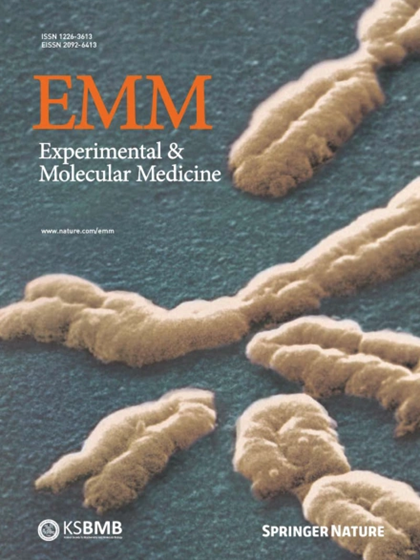非编码RNA在黄韧带退行性变中起重要的表观遗传调节作用。
IF 9.5
2区 医学
Q1 BIOCHEMISTRY & MOLECULAR BIOLOGY
引用次数: 0
摘要
黄韧带变性,包括黄韧带肥大和骨化,导致老年人退行性椎管狭窄。然而,黄韧带变性的潜在机制尚不清楚,治疗策略有限。非编码rna包括微小rna、环状rna和长链非编码rna。作为重要的表观遗传修饰,非编码rna参与了包括黄韧带变性在内的几种年龄相关疾病的进展。既往研究表明,非编码rna可通过调控相关基因的表达,调控黄韧带细胞的成骨分化和纤维化。本文就非编码rna及其在黄韧带变性中的作用作一综述。本文章由计算机程序翻译,如有差异,请以英文原文为准。

Noncoding RNA as a crucial epigenetic modulator in the degeneration of the ligamentum flavum
Ligamentum flavum degeneration, including hypertrophy and ossification of the ligamentum flavum, leads to degenerative spinal stenosis in older adults. However, the underlying mechanisms of ligamentum flavum degeneration remain unclear, and therapeutic strategies are limited. Noncoding RNAs include microRNAs, circular RNAs, and long noncoding RNAs. As important epigenetic modifications, noncoding RNAs are involved in the progression of several age-related diseases, including ligamentum flavum degeneration. Previous studies have shown that noncoding RNAs can regulate the osteogenic differentiation and fibrosis of ligamentum flavum cells by regulating the expression of related genes. In this review, we discuss noncoding RNAs and their role in ligamentum flavum degeneration. Degenerative Spinal Stenosis (DSS), a common condition in older adults causing numbness and muscle weakness, is often caused by the breakdown of the ligamentum flavum, a spinal structure. Despite DSS’s commonness, the role of non-coding RNAs, molecules that don’t code for proteins but regulate gene activity, in LF breakdown is not well understood. Researchers reviewed the biological functions of ncRNAs in LF breakdown, focusing on microRNAs, circular RNAs, and long non-coding RNAs, aiming to provide new insights. They identified specific ncRNAs contributing to LF degeneration, suggesting their potential as treatment targets. This research could guide future studies towards non-surgical treatments for DSS. The findings reveal that manipulating these ncRNAs could offer new treatment options. This could lead to targeted therapies addressing DSS’s underlying causes, offering hope for less invasive treatments in the future. This summary was initially drafted using artificial intelligence, then revised and fact-checked by the author.
求助全文
通过发布文献求助,成功后即可免费获取论文全文。
去求助
来源期刊

Experimental and Molecular Medicine
医学-生化与分子生物学
CiteScore
19.50
自引率
0.80%
发文量
166
审稿时长
3 months
期刊介绍:
Experimental & Molecular Medicine (EMM) stands as Korea's pioneering biochemistry journal, established in 1964 and rejuvenated in 1996 as an Open Access, fully peer-reviewed international journal. Dedicated to advancing translational research and showcasing recent breakthroughs in the biomedical realm, EMM invites submissions encompassing genetic, molecular, and cellular studies of human physiology and diseases. Emphasizing the correlation between experimental and translational research and enhanced clinical benefits, the journal actively encourages contributions employing specific molecular tools. Welcoming studies that bridge basic discoveries with clinical relevance, alongside articles demonstrating clear in vivo significance and novelty, Experimental & Molecular Medicine proudly serves as an open-access, online-only repository of cutting-edge medical research.
 求助内容:
求助内容: 应助结果提醒方式:
应助结果提醒方式:


